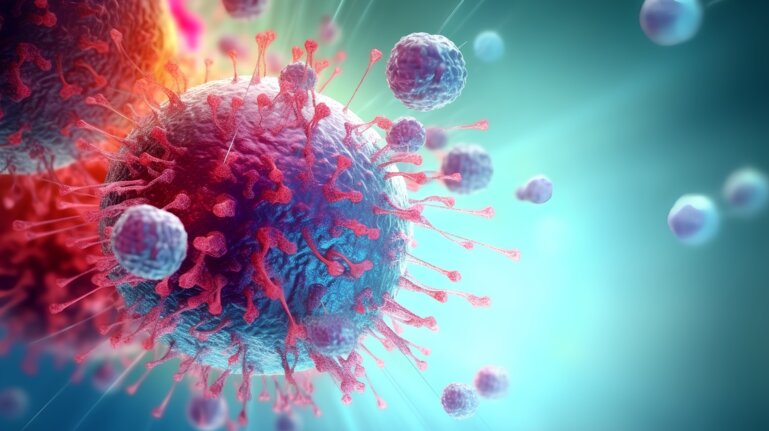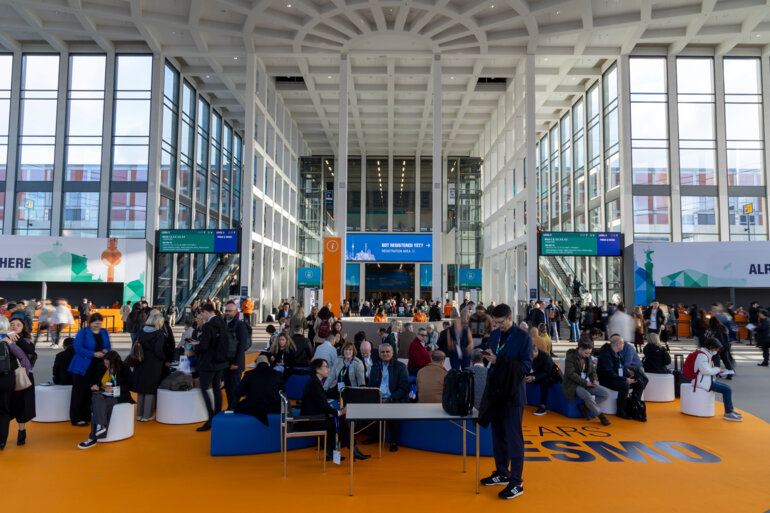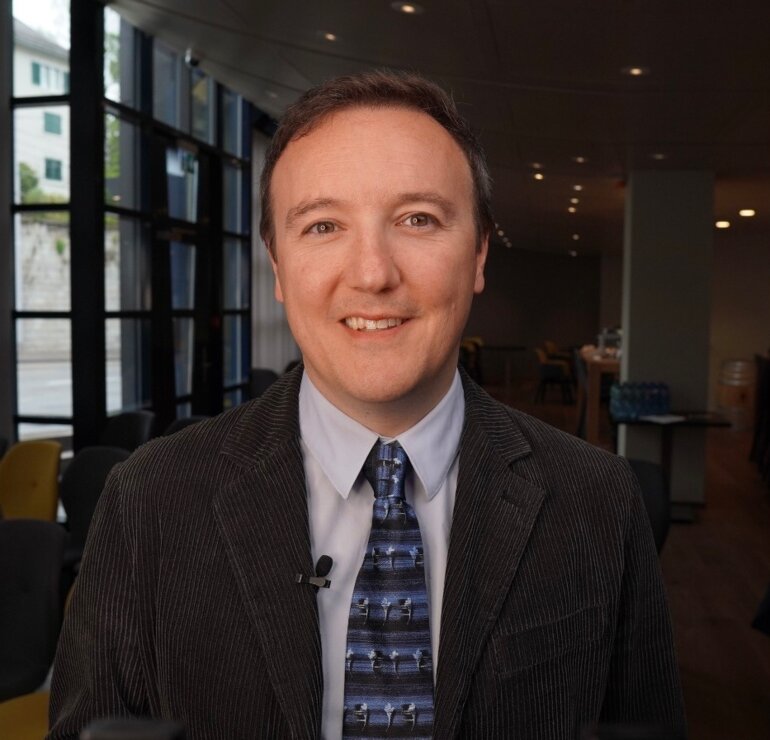With multiple new therapies available, Prof. Johan Vansteenkiste says the search is on for biomarkers to better match patients to treatments
“Drop by drop, the seemingly incremental progress we made over the last 30 years has nearly quadrupled the cure rates of non-metastatic lung cancer patients and allowed those with advanced disease to live longer and better lives,” says Prof. Johan Vansteenkiste, Professor of Medicine at the Catholic University of Leuven and Head of Clinic in the Respiratory Oncology Unit and its Clinical Trial Unit at University Hospitals Leuven. In his keynote lecture “Drop by drop makes a lake – 30 years of progress in lung cancer” at the European Lung Cancer Virtual Congress (ELCC) 2021, the recipient of the Heine H. Hansen Award 2021 highlights the importance of addressing acquired drug resistance and accurately identifying the right treatments for patients in order to exploit the full potential of novel therapies delivered by decades of research.
What did a diagnosis of lung cancer mean for patients 30 years ago?
When I started my training, no more than one in four patients could have their tumour surgically resected. Only about half of them were cured, so less than 15% of the lung cancer patient population. As soon as patients had lymph node spread, the only assistance they could be offered was palliative radiotherapy. By way of comparison, chances of cure today stand at around 50% for locally advanced non-metastatic non-small cell lung cancer (NSCLC).
In the early years of my career, we succeeded in increasing cure rates for these patients mainly by improving combined modality therapies, refining the multidisciplinary interaction between surgery, radiotherapy and chemotherapy. These advances were also aided by better staging methods, including with the implementation of FDG-PET scans (Chest 1997 December 1;112(6):1480-1486) and the use of endoscopic lymph node staging instead of invasive surgical procedures, which also allowed us to monitor the evolution of the disease during and after treatment (J Clin Oncol. 2008 March 1;26(7):1128-1134).
Unfortunately, very little happened to improve outcomes for metastatic patients for a very long time. It was just over a decade ago that we were able to start using targeted therapies in our patients, based on ever-increasing knowledge of the biology of lung cancer.
You were involved from the outset in the development of the first tyrosine kinase inhibitors (TKIs) targeting the epidermal growth factor receptor (EGFR) mutation. What has changed for metastatic lung cancer patients since the approval of gefitinib in 2008?
In addition to EGFR, we have identified a number of other oncogenic drivers – genes in the cancer responsible for the production of proteins that drive the disease – which can be effectively blocked with recent generations of TKIs (Nat Rev Cancer 2019 August 12;19:495-509). One example is the anaplastic lymphoma kinase (ALK) fusion oncogene, where targeted agents in combination with chemotherapy have been shown to increase the five-year survival rate to around 50% in patients who carry it (J Clin Oncol. 2018 May 16;36(22):2251-2258).
Although these achievements are significant, we are not yet able to cure metastatic lung cancer. Like chemo, targeted therapies are chemical agents that can control the tumour for a number of years, but because treatments in the metastatic stages do not eliminate all the tumour cells from the body, over time the cancer evolves to become drug resistant and causes patients to relapse.
The recent arrival of immunotherapy in the clinic has raised hopes of further improving outcomes for metastatic patients. Do you share this expectation?
Administered for a given period of time, typically two years, immunotherapy strengthens the immune system to fight the cancer, yielding impressive therapeutic results in phase III clinical trials compared to chemo alone (J Clin Oncol. 2020;38(15):9500). What we are seeing now from the follow-up data is that unlike the survival rates observed with targeted therapy, which are higher but still trend downwards over time, the survival curves of patients treated with immunotherapy seems to have hit a plateau at five years (Ann Oncol. 2020 September 1;31(S4):S1181-S1182). In other words, at five years after treatment, fewer patients have died with immunotherapy than with targeted agents. This plateau in survival is also seen in melanoma, where the available follow-up period is now up to 10 years.
We hope that this memory function of the immune system, having been trained to permanently fight back against emerging new cancer cells even in the absence of active treatment, could lead to certain patients with metastatic disease being fully cured. This is yet to be proven, but I think our hopes are well-founded.
Can the benefits of immunotherapy be extended to more patients?
Studies like the PACIFIC trial have successfully used immunotherapy in patients with stage III non-small cell lung cancer (N Engl J Med. 2018 December 13;379:2342-2350), demonstrating a 10% increase in survival at four years compared to standard chemoradiotherapy. In our clinical trial unit in Leuven and elsewhere, there are now several protocols ongoing that are trying to adapt immunotherapy as adjuvant and neoadjuvant treatment for surgical cases of NSCLC with the aim of further improving cure rates in patients with disease stages I and II.
Another priority for the coming years will be the identification of biomarkers to allow better targeting of immunotherapy to the patients who will truly benefit from it. Beyond PDL-1, which predicts positive treatment response, we do not yet have biomarkers to tell us who should receive single-agent versus combined immunotherapy, who is likely to have toxicity or who will not be helped at all by the treatment. This is important because we know that while 25 to 30% of lung tumours are vulnerable to the immune system, others develop in a very immunosuppressive environment, or no immune environment at all, rendering the treatment powerless.
The holy grail for the next decade of research, therefore, will also be to find out how we can turn these “cold” tumours, as they are referred to, into “hot” ones by bringing components of the immune system into the tumour to give checkpoint inhibitors a chance to effectively fight the cancer.
With the wide range of therapies now available, what do you think the future of lung cancer treatment will look like?
Chemotherapy will continue to have an important place because it has proven value, but it is likely to be increasingly complemented by immunotherapy. While targeted therapies have been shown to significantly prolong progression-free survival in non-metastatic disease (N Engl J Med. 2020 October 29;383:1711-1723), it is yet to be determined whether this will lead to a difference in five-year overall survival and cure rates.
Moving forward, I also think the time has come to pursue a “less is more” approach. For instance, we believe that about 50% of surgical patients would be cured without any additional therapy after having their tumour removed. With reliable predictive markers to identify them, we could spare these patients the toxicity of additional treatments and funnel adjuvant therapy towards those individuals who really need it.








